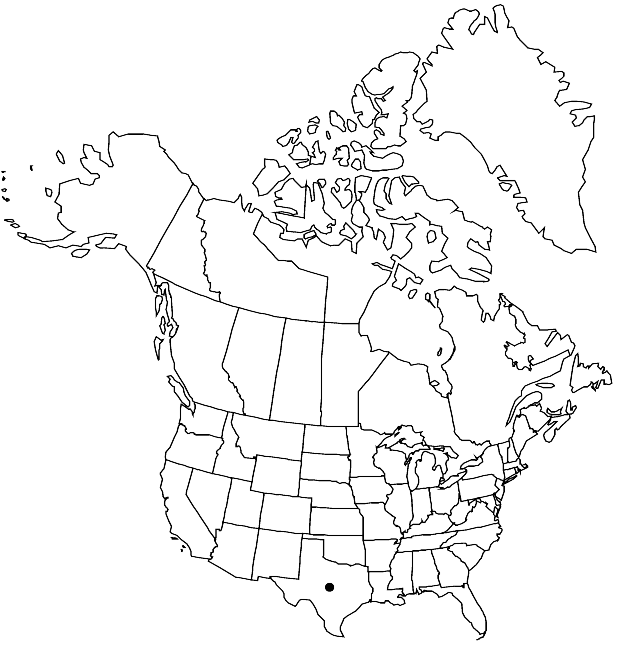Difference between revisions of "Physaria densiflora"
Novon 12: 322. 2002.
FNA>Volume Importer |
imported>Volume Importer |
||
| (4 intermediate revisions by 2 users not shown) | |||
| Line 11: | Line 11: | ||
|name=Vesicaria densiflora | |name=Vesicaria densiflora | ||
|authority=A. Gray | |authority=A. Gray | ||
| + | |rank=species | ||
|publication_title=Boston J. Nat. Hist. | |publication_title=Boston J. Nat. Hist. | ||
|publication_place=6: 145. 1850 | |publication_place=6: 145. 1850 | ||
| Line 17: | Line 18: | ||
|name=Lesquerella densiflora | |name=Lesquerella densiflora | ||
|authority=(A. Gray) S. Watson | |authority=(A. Gray) S. Watson | ||
| + | |rank=species | ||
}} | }} | ||
|hierarchy=Brassicaceae;Brassicaceae tribe Physarieae;Physaria;Physaria densiflora | |hierarchy=Brassicaceae;Brassicaceae tribe Physarieae;Physaria;Physaria densiflora | ||
| Line 41: | Line 43: | ||
-->{{#Taxon: | -->{{#Taxon: | ||
name=Physaria densiflora | name=Physaria densiflora | ||
| − | |||
|authority=(A. Gray) O’Kane & Al-Shehbaz | |authority=(A. Gray) O’Kane & Al-Shehbaz | ||
|rank=species | |rank=species | ||
| Line 56: | Line 57: | ||
|publication year=2002 | |publication year=2002 | ||
|special status= | |special status= | ||
| − | |source xml=https:// | + | |source xml=https://bitbucket.org/aafc-mbb/fna-data-curation/src/2e0870ddd59836b60bcf96646a41e87ea5a5943a/coarse_grained_fna_xml/V7/V7_1038.xml |
|tribe=Brassicaceae tribe Physarieae | |tribe=Brassicaceae tribe Physarieae | ||
|genus=Physaria | |genus=Physaria | ||
Latest revision as of 22:29, 5 November 2020
Annuals or biennials; caudex simple or branched, (relatively small, cespitose); densely pubescent, trichomes (spreading, sessile or short-stalked), 5–7-rayed, rays distinct and simple, (tuberculate, finely tubercled with a U-shaped notch on one side). Stems simple or few to several from base, erect or decumbent, (rarely branched, usually leafy), to 4 dm. Basal leaves: blade lyrate-pinnatifid, 1–7 cm, margins entire or shallowly dentate. Cauline leaves (sessile or shortly petiolate); blade narrowly obovate to elliptic, 0.5–6 cm, margins entire, repand, or shallowly dentate. Racemes dense, (elongated in fruit, often subtended by distal cauline leaves). Fruiting pedicels (usually divaricate-spreading, straight or slightly curved, delicate, sometimes drooping, especially on herbarium specimens), 7–10 mm, (somewhat rigid). Flowers: sepals elliptic, 3.7–7.2 mm, (lateral pair somewhat cucullate, median pair thickened apically); petals (yellow to orange-yellow), obovate to obdeltate, (4.5–)7–10(–11) mm, (tapering to short claw, apex often emarginate). Fruits (sessile or substipitate), globose or broadly obovate, not inflated, 4–6 mm, (smooth); valves (not retaining seeds after dehiscence), glabrous; replum as wide as or wider than fruit; ovules 8–16 per ovary; style 2–5 mm. Seeds flattened. 2n = 14.
Phenology: Flowering Mar–May.
Habitat: Sandy, granitic, or calcareous soils, sandy ledges, limestone outcrops, rocky prairies, uplands
Elevation: 30-400 m
Discussion
Alyssum densiflorum (A. Gray) Kuntze (1891), not Desfontaines (1808) is an illegitimate name, sometimes found in synonymy with Physaria densiflora.
Selected References
None.
